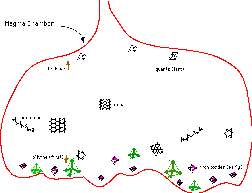This is a drawing of magma changing chemical composition within the chamber.
Click on image for full size
Magma Chamber
When magma is erupted onto the surface in the form of lava, it becomes silicate rock. With each different eruption of the volcano, lava which comes to the surface is made of slightly different chemicals, and forms slightly different rocks.
Thus, magma inside the chamber is a little like something left in the refrigerator too long. Each time the door is opened, it looks a little different.
Scientists examine the layers of lava flows of a volcano to study the chemical history of the magma inside the chamber.
You might also be interested in:

Minerals are the building blocks of rocks. There are many different types of minerals. All of them are solid and all are made of atoms of elements. Minerals can grow even though they are not alive. Most
...more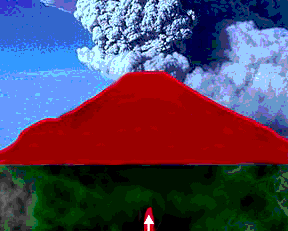
Volcanoes form when hot material from below risesand leaks into the crust. The hot material, called magma, rising from lower ground, gathers in a reservoir called the magma chamber. Eventually, but not
...more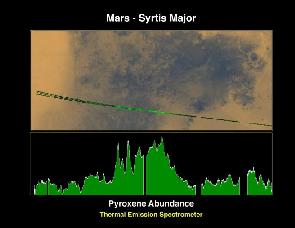
Mars Global Surveyor made a measurement of pyroxene on the surface of Mars. Scientists looking at results from the Mars Pathfinder Rover's study of the rocks of Mars could not find evidence of pyroxene
...more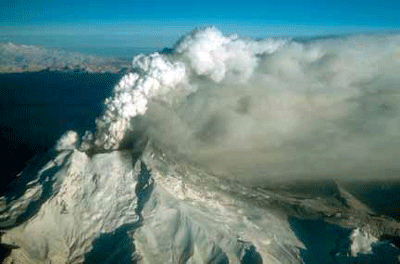
Ash is formed as a volcano erupts when rocks made by the volcano blow apart into millions of tiny pieces. The rocks are still very hot, because they just formed from lava. If the hot rocks come into contact
...more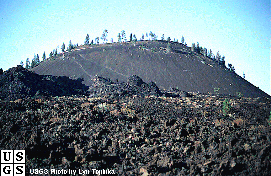
Cinder cones are simple volcanoes which have a cone shape and are not very big. Compare the size of this volcano to the strato-volcano in this image. They are usually made of piles of lava, not ash. During
...more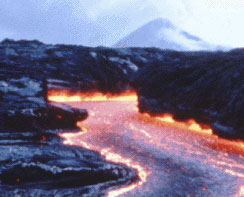
Lava can move in two ways, wide flat lava flows, or through channels which squeeze the lava into a small area. The fastest lava flows move at about 6 mi/hr, an easy jog, but they average between 2/3 and
...more
Plates at our planet’s surface move because heat in the Earth’s core causes molten rock in the mantle layer to flow. We used to think the Earth’s plates just surfed on top of the moving mantle, but now
...more


